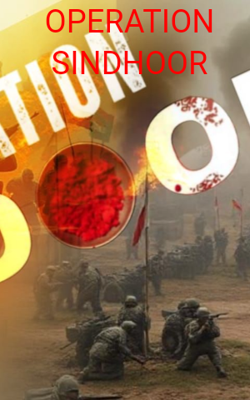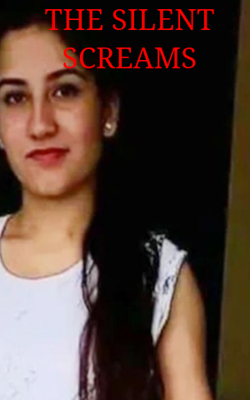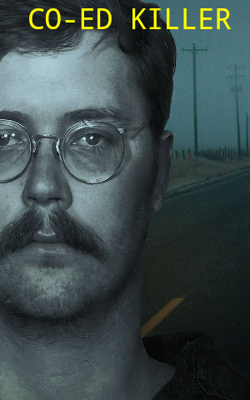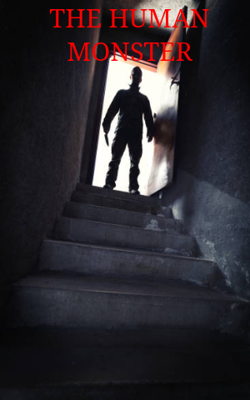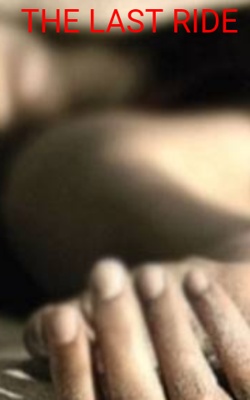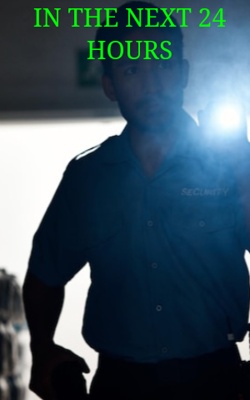The Great Legend
The Great Legend


When we ask many of our elderly people and children the question, "Who was the reason for getting independence to India?." Many will give different answers.
Some would say that it's Mahatma Gandhi. Some would say that it's Subash Chandra Bose and some other famous leaders.
But, to say frankly, not only they, but we got freedom due to several leaders like K. Kamaraj, Bharathiyar, V.O.Chidambaram Pillai, Tiruppur Kumaran, etc. One among them is the unforgettable leader to everyone. He is Bhagat Singh.
At that time, British officials and rulers were atrocious and cruel towards Indian People. They were rigorous and brutal through their activities. At that time, when people were regretting that no one comes to their rescue, this man came inside for their rescue(despite some others like Rani Lakshmi Bhai, Uyyalawada Narasimha Reddy, and few others).
Bhagat Singh was a Sandhu Jat, born in 1907 to Kishan Singh and Vidyavati at Chak No. 105 GB, Banga village, Jaranwala Tehsil in the Lyallpur district of the Punjab Province of British India present-day Pakistan. His birth coincided with the release of his father and two uncles, Ajit Singh and Swaran Singh, from jail. His family members were Hindus and Sikhs. Some had been active in Indian Independence movements, others had served in Maharaja Ranjit Singh's army. His ancestral village was Khatkar Kalan, near the town of Banga, India in Nawanshahr district (now renamed Shaheed Bhagat Singh Nagar) of Punjab.
His family was politically active. His grandfather, Arjun Singh followed Swami Dayananda Saraswati's Hindu reformist movement, Arya Samaj, which had a considerable influence on Bhagat. His father and uncles were members of the Ghadar Party, led by Kartar Singh Sarabha and Har Dayal. Ajit Singh was forced into exile due to pending court cases against him while Swaran Singh died at home in Lahore in 1910 following his release from jail.
Unlike many Sikhs of his age, Singh did not attend the Khalsa High School in Lahore. His grandfather did not approve of the school officials' loyalty to the British government. He was enrolled instead in the Dayanand Anglo-Vedic High School, an Arya Samaji institution. The Arya Samaj philosophy greatly influenced him throughout his life.
In 1919, when he was 12 years old, Singh visited the site of the Jallianwala Bagh massacre hours after thousands of unarmed people gathered at a public meeting had been killed. When he was 14 years old, he was among those in his village who welcomed protesters against the killing of a large number of unarmed people at Gurudwara Nankana Sahib on 20 February 1921. Singh became disillusioned with Mahatma Gandhi's philosophy of non-violence after he called off the non-cooperation movement. Gandhi's decision followed the violent murders of policemen by villagers who were reacting to the police killing three villagers in 1922 Chauri Chaura incident. Singh joined the Young Revolutionary Movement and began to advocate for the violent overthrow of the British Government in India.
In 1923, Singh joined the National College in Lahore,[c] where he also participated in extra-curricular activities like the dramatics society. In 1923, he won an essay competition set by the Punjab Hindi Sahitya Sammelan, writing on the problems in Punjab. Inspired by the Young Italy movement of Giuseppe Mazzini, he founded the Indian socialist youth organization Naujawan Bharat Sabha in March 1926. He also joined the Hindustan Republican Association, which had prominent leaders, such as Chandrashekhar Azad, Ram Prasad Bismil, and Shahid Ashfaqallah Khan. A year later, to avoid an arranged marriage, Singh ran away to Cawnpore. In a letter he left behind, he said:
"My life has been dedicated to the noblest cause, that of the freedom of the country. Therefore, there is no rest or worldly desire that can lure me now."
Police became concerned with Singh's influence on youths and arrested him in May 1927 on the pretext that he had been involved in a bombing that had taken place in Lahore in October 1926. He was released on a surety of Rs. 60,000 five weeks after his arrest. He wrote for, and edited, Urdu and Punjabi newspapers, published in Amritsar, and also contributed to low-priced pamphlets published by the Naujawan Bharat Sabha that excoriated the British. He also wrote for Kirti, the journal of the Kirti Kisan Party ("Workers and Peasants Party") and briefly for the Veer Arjun newspaper, published in Delhi. He often used pseudonyms, including names such as Balwant, Ranjit, and Vidhrohi.
In 1928, the British government set up the Simon Commission to report on the political situation in India. Some Indian political parties boycotted the Commission because there were no Indians in its membership,[e] and there were protests across the country. When the Commission visited Lahore on 30 October 1928, Lala Lajpat Rai led a march in protest against it. Police attempt to disperse the large crowd resulted in violence. The superintendent of police, James A. Scott, ordered the police to lathi charge (use batons against) the protesters and personally assaulted Rai, who was injured. Rai died of a heart attack on 17 November 1928. Doctors thought that his death might have been hastened by the injuries he had received. When the matter was raised in the Parliament of the United Kingdom, the British Government denied any role in Rai's death.
Bhagat was a prominent member of the Hindustan Republican Association (HRA) and was probably responsible, in large part, for its change of name to Hindustan Socialist Republican Association (HSRA) in 1928. The HSRA vowed to avenge Rai's death. Singh conspired with revolutionaries like Shivaram Rajguru, Sukhdev Thapar, and Chandrashekhar Azad to kill Scott. However, in a case of mistaken identity, the plotters shot John P. Saunders, an Assistant Superintendent of Police, as he was leaving the District Police Headquarters in Lahore on 17 December 1928.
Contemporary reaction to the killing differs substantially from the adulation that later surfaced. The Naujawan Bharat Sabha, which had organized the Lahore protest march along with the HSRA, found that attendance at its subsequent public meetings dropped sharply. Politicians, activists, and newspapers, including The People, which Rai had founded in 1925, stressed that non-co-operation was preferable to violence.
After killing Saunders, the group escaped through the D.A.V. College entrance, across the road from the District Police Headquarters. Chanan Singh, a Head Constable who was chasing them, was fatally injured by Chandrashekhar Azad's covering fire.[34] They then fled on bicycles to pre-arranged safe houses. The police launched a massive search operation to catch them, blocking all entrances and exits to and from the city; the CID kept a watch on all young men leaving Lahore. The fugitives hid for the next two days. On 19 December 1928, Sukhdev called on Durgawati Devi, sometimes known as Durga Bhabhi, wife of another HSRA member, Bhagwati Charan Vohra, for help, which she agreed to provide. They decided to catch the train departing from Lahore to Bathinda en route to Howrah (Calcutta) early the next morning.
Singh and Rajguru, both carrying loaded revolvers, left the house early the next day. Dressed in western attire (Bhagat Singh cut his hair, shaved his beard and wore a hat over cropped hair), and carrying Devi's sleeping child, Singh and Devi passed as a young couple, while Rajguru carried their luggage as their servant. At the station, Singh managed to conceal his identity while buying tickets, and the three boarded the train heading to Cawnpore (now Kanpur). There they boarded a train for Lucknow since the CID at Howrah railway station usually scrutinized passengers on the direct train from Lahore. At Lucknow, Rajguru left separately for Benares while Singh, Devi, and the infant went to Howrah, with all except Singh returning to Lahore a few days later.
For some time, Singh had been exploiting the power of drama as a means to inspire the revolt against the British, purchasing a magic lantern to show slides that enlivened his talks about revolutionaries such as Ram Prasad Bismil who had died as a result of the Kakori conspiracy. In 1929, he proposed a dramatic act to the HSRA intended to gain massive publicity for their aims.[26] Influenced by Auguste Vaillant, a French anarchist who had bombed the Chamber of Deputies in Paris,[37] Singh's plan was to explode a bomb inside the Central Legislative Assembly. The nominal intention was to protest against the Public Safety Bill, and the Trade Dispute Act, which had been rejected by the Assembly but were being enacted by the Viceroy using his special powers; the actual intention was for the perpetrators to allow themselves to be arrested so that they could use court appearances as a stage to publicize their cause.
The HSRA leadership was initially opposed to Bhagat's participation in the bombing because they were certain that his prior involvement in the Saunders shooting meant that his arrest would ultimately result in his execution. However, they eventually decided that he was their most suitable candidate. On 8 April 1929, Singh, accompanied by Batukeshwar Dutt, threw two bombs into the Assembly chamber from its public gallery while it was in session. The bombs had been designed not to kill, but some members, including George Ernest Schuster, the finance member of the Viceroy's Executive Council, were injured. The smoke from the bombs filled the Assembly so that Singh and Dutt could probably have escaped in the confusion had they wished.
Bhagat Singh instead shouted the slogan "Inquilab Zindabad!" ("Long Live the Revolution") and threw leaflets. The two men were arrested and subsequently moved through a series of jails in Delhi.
According to Neeti Nair, associate professor of history, "public criticism of this terrorist action was unequivocal." Gandhi, once again, issued strong words of disapproval of their deed. Nonetheless, the jailed Bhagat was reported to be elated, and referred to the subsequent legal proceedings as a "drama". Singh and Dutt eventually responded to the criticism by writing the Assembly Bomb Statement:
We hold human life sacred beyond words. We are neither perpetrators of dastardly outrages ... nor are we 'lunatics' as the Tribune of Lahore and some others would have it believed ... Force when aggressively applied is 'violence and is, therefore, morally unjustifiable, but when it is used in the furtherance of a legitimate cause, it has its moral justification.
The trial began in the first week of June, following a preliminary hearing in May. On 12 June, both men were sentenced to life imprisonment for: "causing explosions of a nature likely to endanger life, unlawfully and maliciously." Dutt had been defended by Asaf Ali, while Singh defended himself. Doubts have been raised about the accuracy of testimony offered at the trial. One key discrepancy concerns the automatic pistol that Singh had been carrying when he was arrested. Some witnesses said that he had fired two or three shots while the police sergeant who arrested him testified that the gun was pointed downward when he took it from him and that Singh "was playing with it." According to an article in the India Law Journal, the prosecution witnesses were coached, their accounts were incorrect, and Singh had turned over the pistol himself. Singh was given a life sentence.
For several problems, that Bhagat Singh made against the British, he, with two others consisting of Rajguru and Sukhdev were sentenced to death on 24 March 1931.
But, before they could be hanged to death, Jailers asked Gandhiji about sparing their life to which, he replied, "Proceed as per the law, which the British had stated." Henceforth, at 7.30 pm, the trio was hanged to death.
This caused several leaders to take Bhagat Singh as an inspiration to fight against the British while, some criticized his ideologies...He was called a folk hero and still more, he is the folk hero in the minds of several people and henceforth, he is the great legend forever...





















